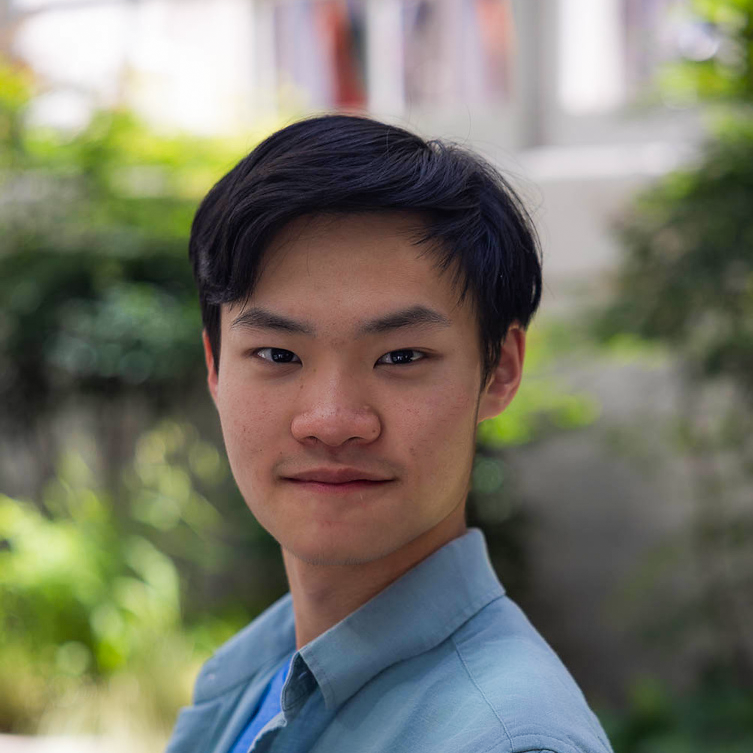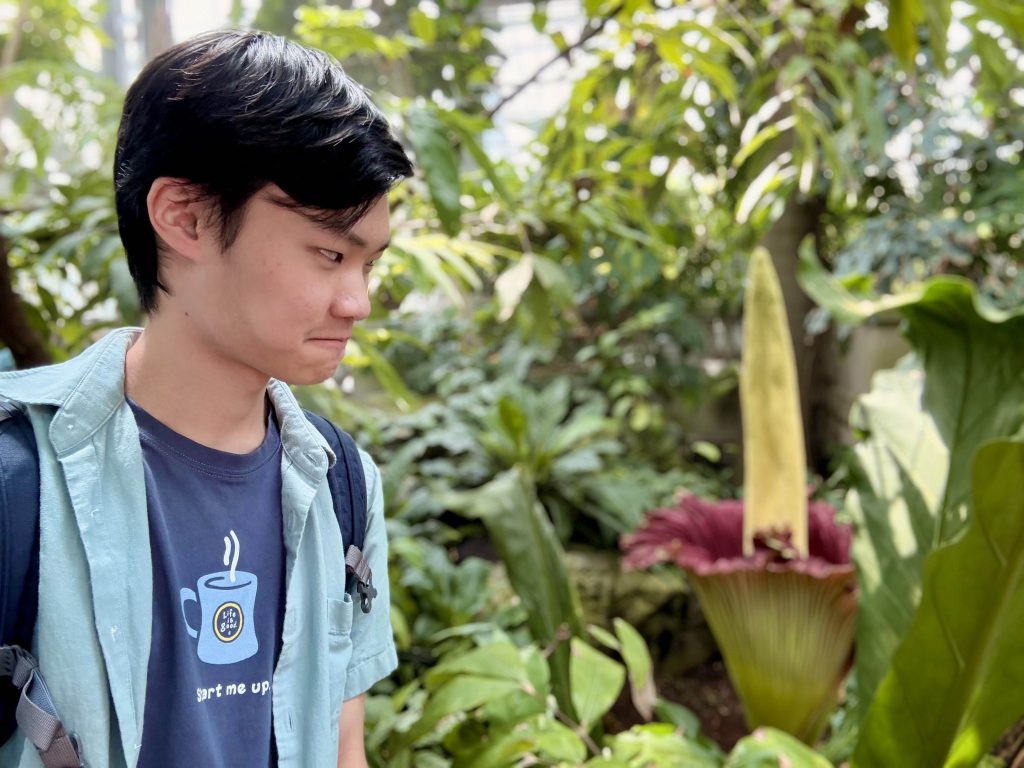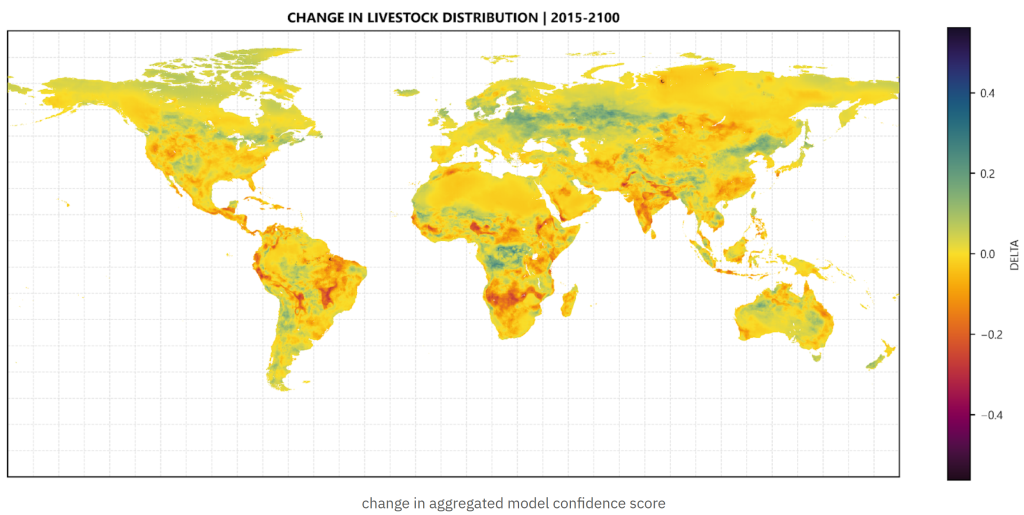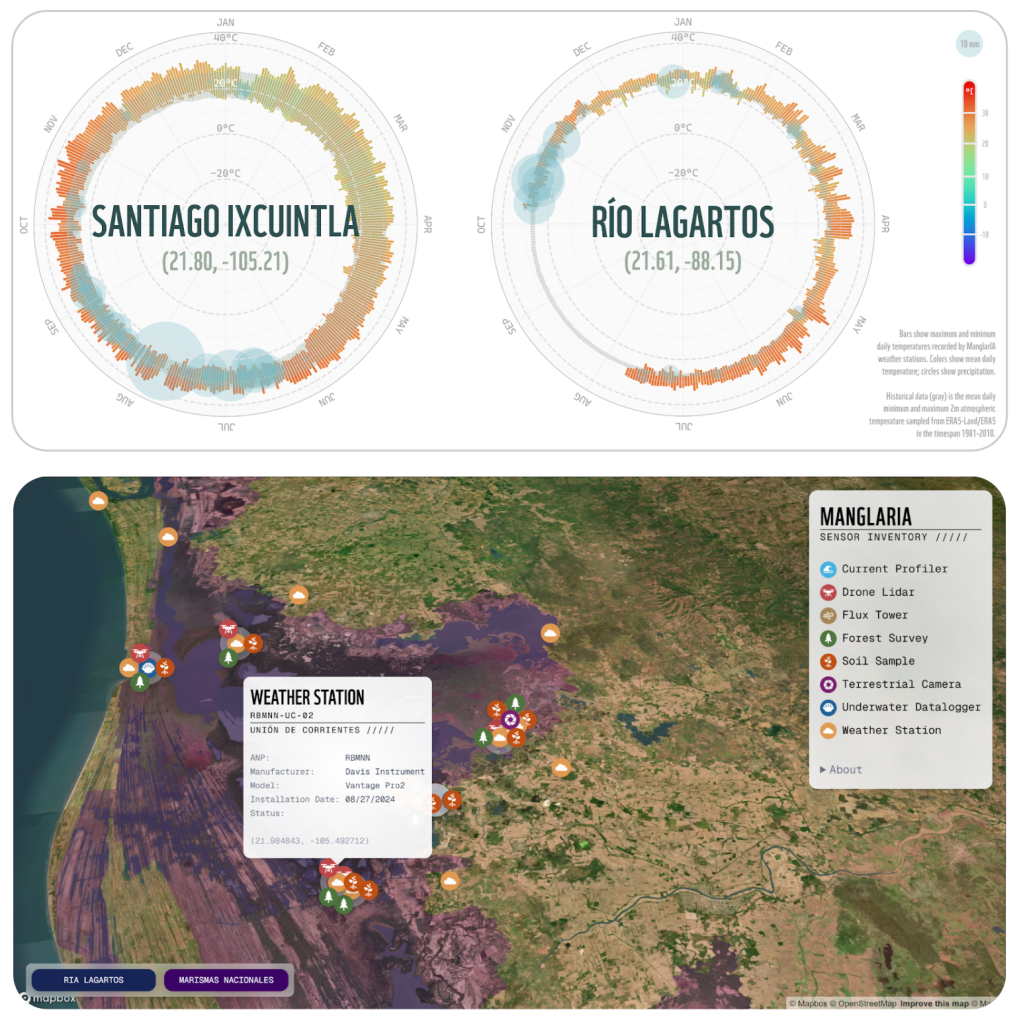Social Impact Internships: Jieruei Chang (’28)

Hi! I’m Jieruei. I’m a rising sophomore majoring in computer science and electrical engineering. This summer, I was a machine learning intern at the World Wildlife Fund. I built (to our knowledge) the first-ever machine learning model for projecting climate change impacts on livestock, and analyzed the ecological effects that shifting livestock distributions could bring.
This internship was my first for a lot of things. It was my first time seeing a corpse flower in bloom. It was my first time working in any kind of environmental field, my first time experiencing work outside of computer science. And it was my first time realizing that perhaps work for social change isn’t so different from the STEM fields I’m used to.

I perhaps walked into my internship project with too much of a computer-scientist lens—trying to immediately define the problem in strictly quantitative terms and optimize for predictive accuracy without first understanding the policy, economic, and ecological contexts the model would be used in. I think there’s a conception or a general image of conservation organizations as some kind of scrappy, boots-on-the-ground environmental heroism effort. That’s true to an extent; it’s very clear that there is a lot of fieldwork going on at WWF (I saw one particular video of my supervisor being attacked by invasive carp). But through this program, I learned that there’s another side; there are supply chain negotiations, sustainability commitments from multinationals, and market-based approaches that try to align ecological preservation with business incentives. And I think that I’m walking away with a better understanding of the balancing act to be done.
At the same time, the data science lens definitely helped. Beyond my primary internship project, I learned about the ways that data science and machine learning are already working at WWF. Mangrove forests sequester a ton of carbon dioxide, and their spiderwebbing root systems act as underwater baffles against increasingly violent storm surges that threaten coastal communities. But the mangrove forests are in danger. Increased temperatures, changing rainfall, and rising sea levels all endanger their survival.

ManglarIA is a Google-backed WWF effort to monitor the mangrove forests in two key biosphere reserves in Mexico. Through a sprawling network of over a hundred and seventy sensors and surveys feeding data to machine learning analyses, ManglarIA’s goal is to monitor and better understand exactly how these mangroves are affected by climate change. And I wanted to get involved. One of the things I liked about WWF was how easy it was to reach across teams and how open people were to collaboration; I didn’t feel siloed into one role. Even though it was nowhere in my original job description, I ended up working closely with the team behind ManglarIA. I made public-facing data visualization tools and built one of four functional cloud pipelines that is currently streaming data from some of WWF’s hundred-plus sensors in the mangrove forests. I learned to work with GCP and Terraform (and learned to hate Terraform, a little, for making me manually import 30+ resources because I couldn’t get it to clone the existing infra cleanly).
From those projects, I learned that impact in tech-for-good work isn’t always about creating cutting-edge products. My data visualizations look cool (or so I hope), and they are what excites the public towards a cause. At the same time, it is dependable, invisible infrastructure that makes all of this work possible. Working with WWF’s conservation and data science teams showed me that the right cloud function or database schema can be the difference between raw, chaotic data and actionable insight for conservationists and policymakers. Mangrove roots and data pipelines lie half-hidden below the waterline, but they anchor the whole ecosystem.

Back in December, in my cover letter to the World Wildlife Fund, I wrote the following:
“I think there’s a lot of hype around AI, and a lot of places where it’s being misused. I’m really excited for this opportunity because this sounds like one place where AI can be used for good―to help the climate crisis rather than contribute to it.”
One summer later, I think that still stands. In conservation and social impact, there’s a role for technology, though it’s a double edged sword. There’s a role for people like me, though I barely fit in with anyone else in DC. There’s a role for machine learning and AI and conservation scientists to work in tandem with multinational corporations protecting supply chains and small communities around mangrove forests. There’s a role for everything and everyone to help make the world a slightly less depressing, slightly less on-track-to-climate-change-hellscape, slightly better place.
Tags: Climate Change, Social Impact Internships, Social Impact Internships 2025, Social Impact Internships Summer 2025, Tech for Good
